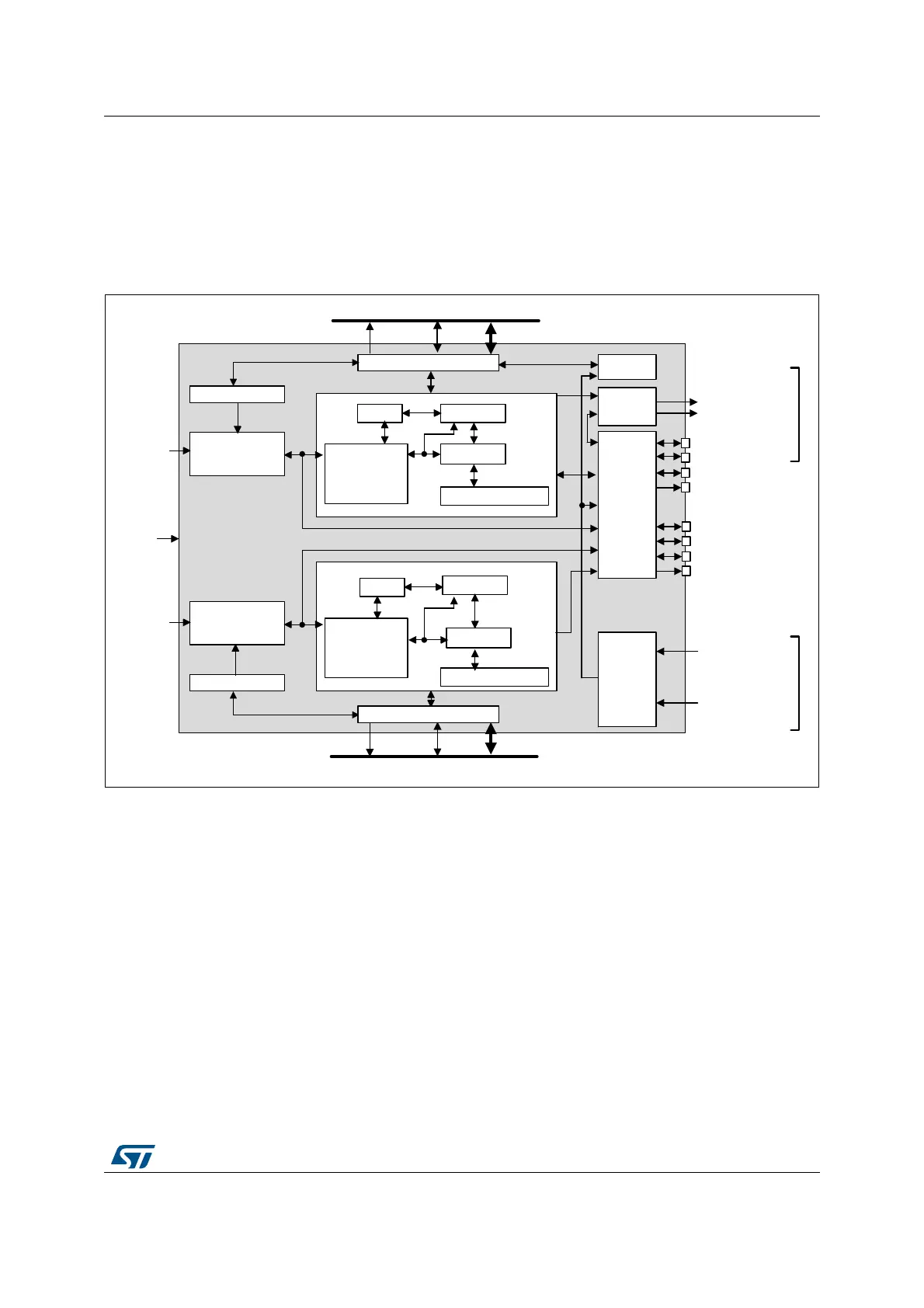DocID024597 Rev 5 1449/1830
RM0351 Serial audio interface (SAI)
1490
43.3 SAI functional description
43.3.1 SAI block diagram
Figure 459 shows the SAI block diagram while Table 251 and Table 252 list SAI internal and
external signals.
Figure 459. Functional block diagram
The SAI is mainly composed of two audio sub-blocks with their own clock generator. Each
audio block integrates a 32-bit shift register controlled by their own functional state machine.
Data are stored or read from the dedicated FIFO. FIFO may be accessed by the CPU, or by
DMA in order to leave the CPU free during the communication. Each audio block is
independent. They can be synchronous with each other.
An I/O line controller manages a set of 4 dedicated pins (SD, SCK, FS, MCLK) for a given
audio block in the SAI. Some of these pins can be shared if the two sub-blocks are declared
as synchronous to leave some free to be used as general purpose I/Os. The MCLK pin can
be output, or not, depending on the application, the decoder requirement and whether the
audio block is configured as the master.
If one SAI is configured to operate synchronously with another one, even more I/Os can be
freed (except for pins SD_x).
The functional state machine can be configured to address a wide range of audio protocols.
Some registers are present to set-up the desired protocols (audio frame waveform
generator).
06Y9
),)2 ),)2FWUO
&RQILJXUDWLRQ
DQGVWDWXV
UHJLVWHUV
)60
ELWVKLIWUHJLVWHU
$XGLREORFN$
),)2
),)2FWUO
&RQILJXUDWLRQ
DQGVWDWXV
UHJLVWHUV
)60
ELWVKLIWUHJLVWHU
$XGLREORFN%
&ORFNJHQHUDWRU
$XGLREORFN$
6$,B$&5
6$,B%&5
&ORFNJHQHUDWRU
$XGLREORFN%
$3%,QWHUIDFH
6$,B*&5
6\QFKUR
FWUORXW
,2/LQH0DQDJHPHQW
6\QFKUR
LQ
6$,
VDLBDB
NHUBFN
VDLBEB
NHUBFN
)6B$
6'B$
6&.B$
0&/.B$
)6B%
6'B%
6&.B%
0&/.B%
ELW$3%EXV
ELW$3%EXV
)URPRWKHU6$,%ORFNV
VDLBDBJEOBLW
VDLBEBJEOBLW
VDLBEBGPD
VDLBDBGPD
7RRWKHU6$,%ORFNV
VDLBV\QFBRXWBVFN
VDLBV\QFBRXWBIV
VDLBV\QFBLQBVFN
VDLBV\QFBLQBIV
VDLBSFON
$3%,QWHUIDFH

